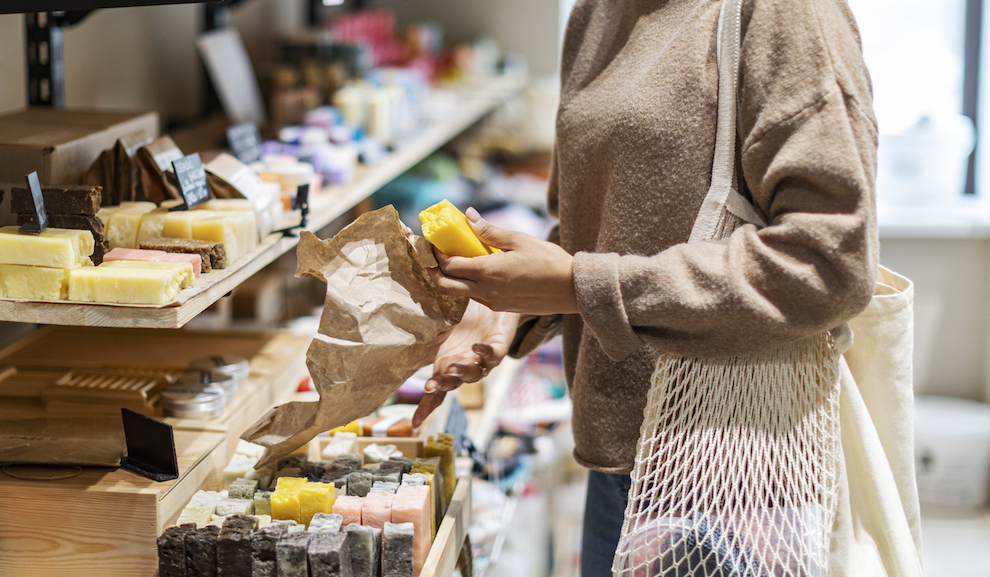Consumer research shows women are transforming how they approach beauty and wellness
Editor’s note: Lisa Testa is director of client development at Leger USA.
In today's fast-paced, wellness-driven world, women are increasingly embracing skin care as an essential part of their daily routines, reflecting a deeper cultural shift toward holistic health. According to the Leger 2024 Natural Beauty Trends report, this growing trend is redefining how women approach beauty and wellness, focusing not only on appearance but also on mental, emotional and environmental well-being. Alongside this, the rise of waterless beauty products is transforming the industry, offering consumers sustainable and effective solutions while reducing environmental impact.
The insights in the report are based on an online survey conducted among 201 respondents aged 18 to 55 from Leger’s U.S. Health and Wellness Community. It explores various themes, including earth friendly beauty, purposeful ingredients, sustainable packaging and skin care as self-care.
Defining the health and wellness community
The health and wellness community is comprised of individuals who actively engage in behaviors and make choices that enhance their physical, mental and emotional well-being. This group includes various personas that reflect different priorities and levels of engagement with health-related activities. Understanding nuances among each persona is crucial for brand teams and researchers aiming to connect with these consumers effectively.
Waterless beauty: A growing consumer demand
According to the report, 69% of women are interested in waterless beauty products, with solid bar forms and concentrated oils being particularly popular. This trend reflects the growing demand for products that are not only effective but also environmentally responsible.
The report highlights that younger consumers, particularly those between the ages of 18 and 34, are at the forefront of this shift. Social media has amplified their awareness of environmental issues, making them more likely to adopt sustainable products. For this demographic, waterless beauty products are not just a passing trend but a symbol of a broader commitment to environmental stewardship. In fact, 75% of respondents in this age group emphasized the importance of reducing plastic waste, particularly in the ocean, as a key factor in their purchasing decisions. Waterless beauty products eliminate water, often used as a filler, resulting in more concentrated and longer-lasting formulations. These products typically require less packaging, further reducing their environmental footprint.
The rise of zero-waste packaging
Nearly 40% of women expressed interest in going completely package-free, underscoring the significant role packaging plays in their beauty product choices.
Forty-two percent of women expressed a preference for products that come in zero-waste packaging, with a strong preference for materials like bamboo, glass and stainless steel. Younger consumers are particularly interested in these options, seeking products that align with their values of sustainability and environmental responsibility. This preference for eco-friendly packaging is a clear signal for beauty brands to innovate not only in their formulations but also in how they package their products.
Skin care as self-care
Skin care routines, once considered mere beauty rituals, have become integral to self-care for many women. The 2024 Leger Natural Beauty Trends report reveals that women between the ages of 18 to 55 increasingly view their skin care practices as vital components of their overall wellness. Using multiple products daily (on average four-to-five skin care products) – particularly cleansers, serums and toners – women are nurturing their skin not only to enhance their appearance but also to support their mental and emotional health.
Women are also seeking products with transparent ingredient lists, favoring natural and ethically sourced ingredients. This trend toward transparency and sustainability is reshaping the beauty industry, as consumers prioritize products that align with their personal values.
What consumer wellness trends mean for beauty brands
For beauty brands, these insights represent a significant opportunity. The demand for waterless beauty products and zero-waste packaging offers a pathway for innovation and differentiation in a crowded market. Brands that embrace sustainable practices and transparent ingredient sourcing can build stronger connections with eco-conscious consumers, particularly younger women who are driving these trends.
Waterless beauty products, zero-waste packaging and skin care as self-care are not just trends, they reflect a fundamental shift in consumer values toward the growing importance of sustainability in the beauty industry. Brands that align with these values have the potential to not only thrive but lead the industry into a more sustainable future.
